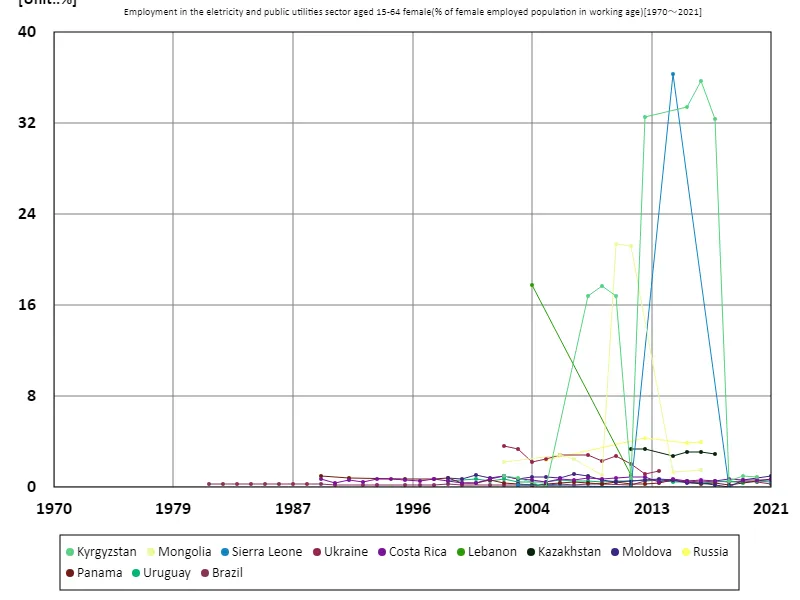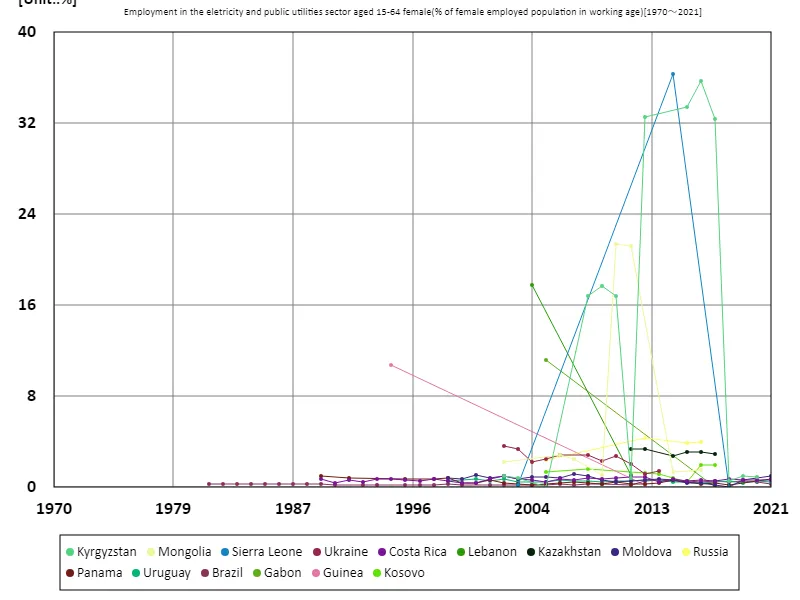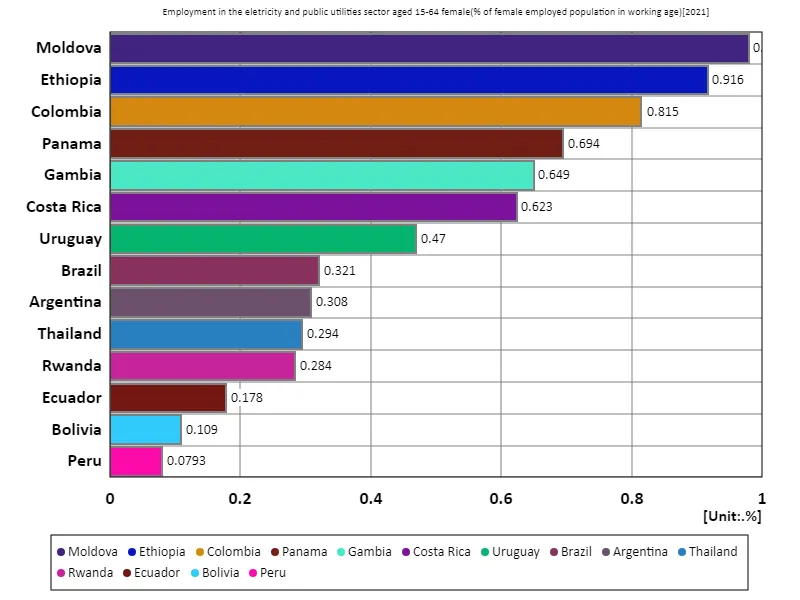- Abstract
- Employment rate for women aged 15-64 in the electrical utilities sector (as a percentage of the working-age female workforce)
- Employment rate in the electrical utilities sector for women aged 15-64 (percentage of working-age female employment in the workforce) (Worldwide)
- Employment rate in the electricity utilities sector for women aged 15-64 (percentage of working-age female employment in the workforce) (Worldwide, latest year)
- Reference
Abstract
Considering the data on ”Employment rate of women aged 15-64 in the electrical utility industry,” Moldova’s figure of 979% is extremely high. This figure suggests that women are employed at a significantly higher rate in the electrical utilities sector in Moldova. Typically, such high employment rates may reflect gender bias in certain industries or specific national policies. For example, it could be that the government is actively promoting employment for women, or that the data reflects certain statistical anomalies. This figure stands out compared to other countries and demonstrates the unique characteristics of the Moldovan labor market.
Employment rate for women aged 15-64 in the electrical utilities sector (as a percentage of the working-age female workforce)
Based on data from 1981 to 2021, the highest employment rate in the electrical utility sector for women aged 15-64 was recorded in 2014 in Sierra Leone at 36.4%. This high percentage indicates that employment opportunities for women in Sierra Leone were expanding significantly at that particular time. However, the current employment rate is significantly lower than its peak of 8.25%, which can be attributed to a number of factors. For example, this could be economic hardship, policy changes, or gender employment fluctuations within an industry. The fluctuations in employment rates in Sierra Leone reflect changes in women’s roles and employment opportunities in the electrical utilities sector over time, likely influenced by adaptation to economic changes and other social factors. Digging deeper into this data will provide a clearer understanding of the evolution of female employment and the factors behind it.


The maximum is 36.4%[2014] of Sierra Leone, and the current value is about 8.25m%
Employment rate in the electrical utilities sector for women aged 15-64 (percentage of working-age female employment in the workforce) (Worldwide)
Based on data from 1981 to 2021, employment in the electrical utility sector among women aged 15-64 reached a high of 36.4% in 2014 in Sierra Leone. This peak indicates a significant expansion of employment opportunities for women in the electrical utilities sector in Sierra Leone. However, recent data shows that Sierra Leone’s employment rate has fallen to a peak of 8.25%. This significant decline could be due to economic fluctuations, social factors, or policy changes in the electric utility sector. Particularly in a country like Sierra Leone, women’s employment opportunities can fluctuate rapidly as economic instability and political upheaval often have a direct impact on the employment situation. Fluctuations in employment rates may also reflect societal changes and industry restructuring. The case of Sierra Leone illustrates how trends in female employment in the electrical utilities sector are sensitive to broader economic conditions and policies.


The maximum is 36.4%[2014] of Sierra Leone, and the current value is about 8.25m%
Employment rate in the electricity utilities sector for women aged 15-64 (percentage of working-age female employment in the workforce) (Worldwide, latest year)
Based on 2021 data, the employment figures for electric utilities for women ages 15-64 vary widely. In particular, Moldova’s extremely high employment rate of 979% must be interpreted with caution and may be due to statistical anomalies or specific calculation methods. Such a high figure may reflect anomalies in the Moldova data or an error in the calculation methodology. The overall average employment rate is 480%, with a total of 6.72%. These values indicate that female employment in the electric utilities sector is relatively widespread, but with large variations across countries. The large difference between the averages and the totals reflects the very wide range of data and the large differences in employment situations across countries. Historically, the employment rate of women in the electric utilities sector is heavily influenced by national policies and economic conditions, so the data shows considerable variation. Additionally, countries with high employment rates may actively encourage female participation in the labor market or may have gender bias in certain industries. Such data provide important insights into the specifics of each country’s labour market and the impact of policies.


The maximum is 979m% of Moldova, the average is 480m%, and the total is 6.72%



Comments